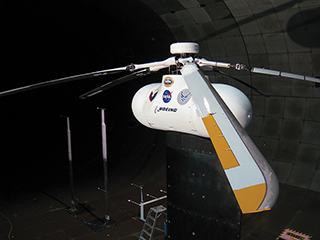Course Description
This course introduces the design of feedback control systems as applied to a variety of air and spacecraft systems. Topics include the properties and advantages of feedback systems, time-domain and frequency-domain performance measures, stability and degree of stability, the Root locus method, Nyquist criterion, …
This course introduces the design of feedback control systems as applied to a variety of air and spacecraft systems. Topics include the properties and advantages of feedback systems, time-domain and frequency-domain performance measures, stability and degree of stability, the Root locus method, Nyquist criterion, frequency-domain design, and state space methods.
Course Info
Instructor
Departments
Learning Resource Types
notes
Lecture Notes
assignment
Problem Sets
Instructor Insights

Adaptive control technologies could like this SMART rotor could allow helicopters to travel with greater efficiency and less noise. (NASA.)








